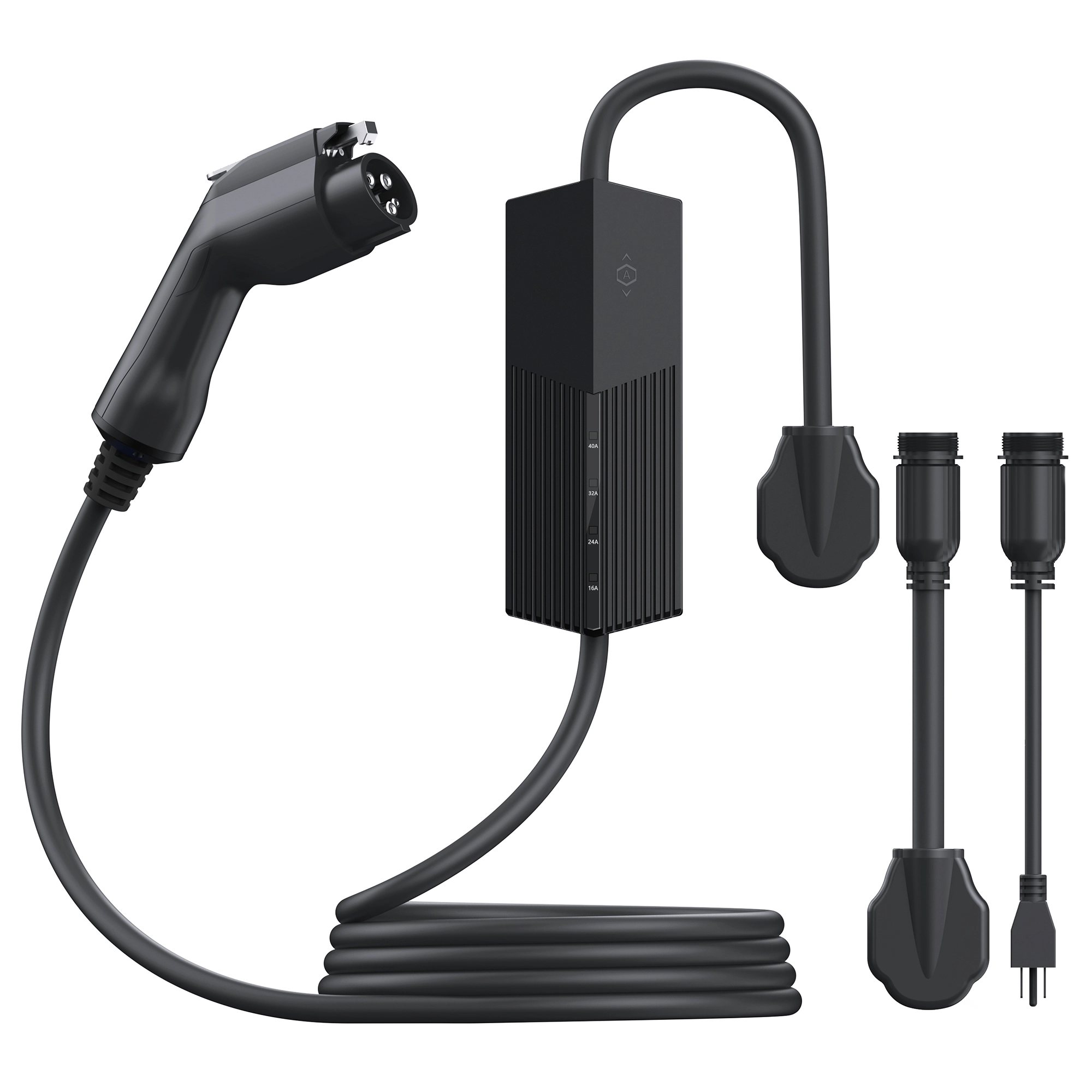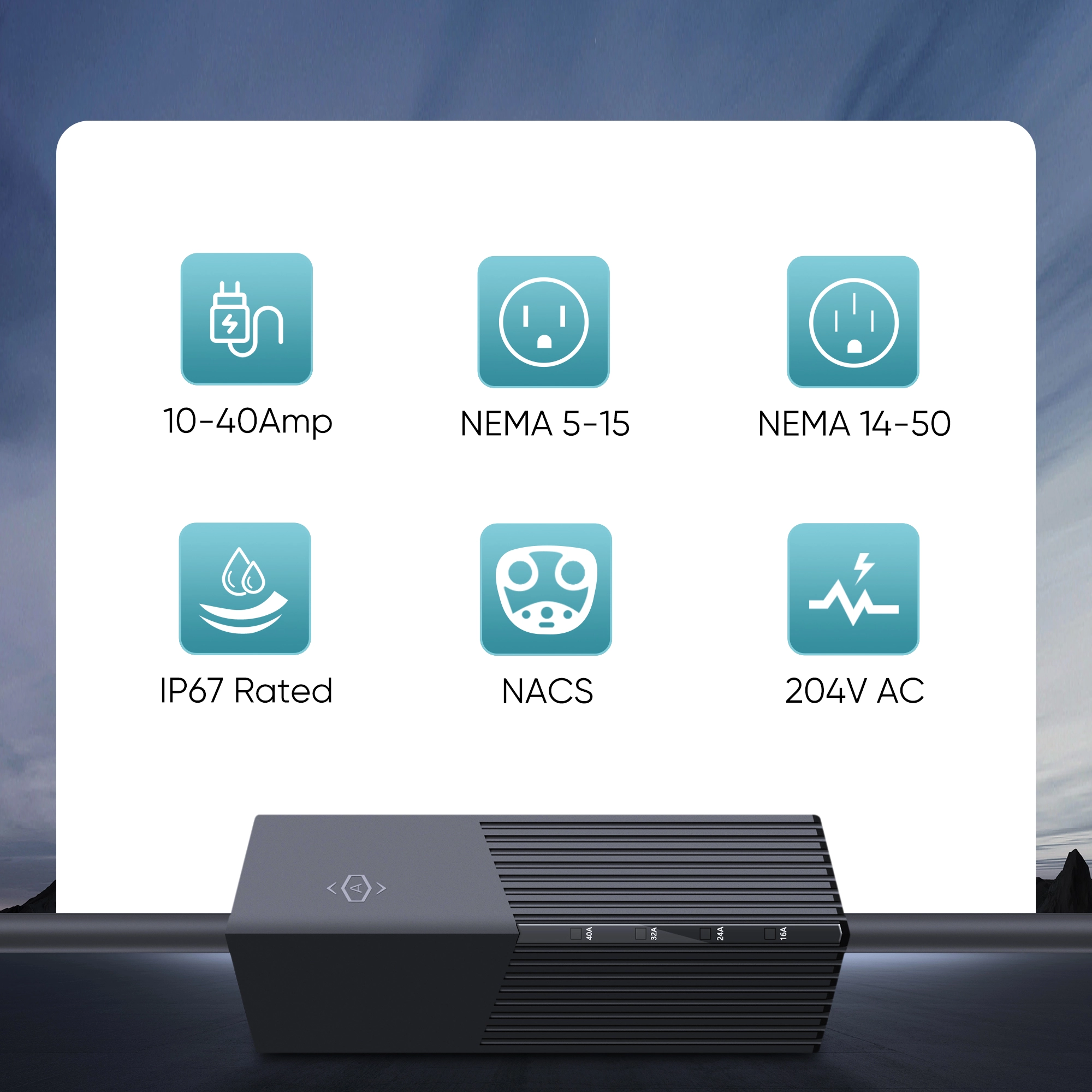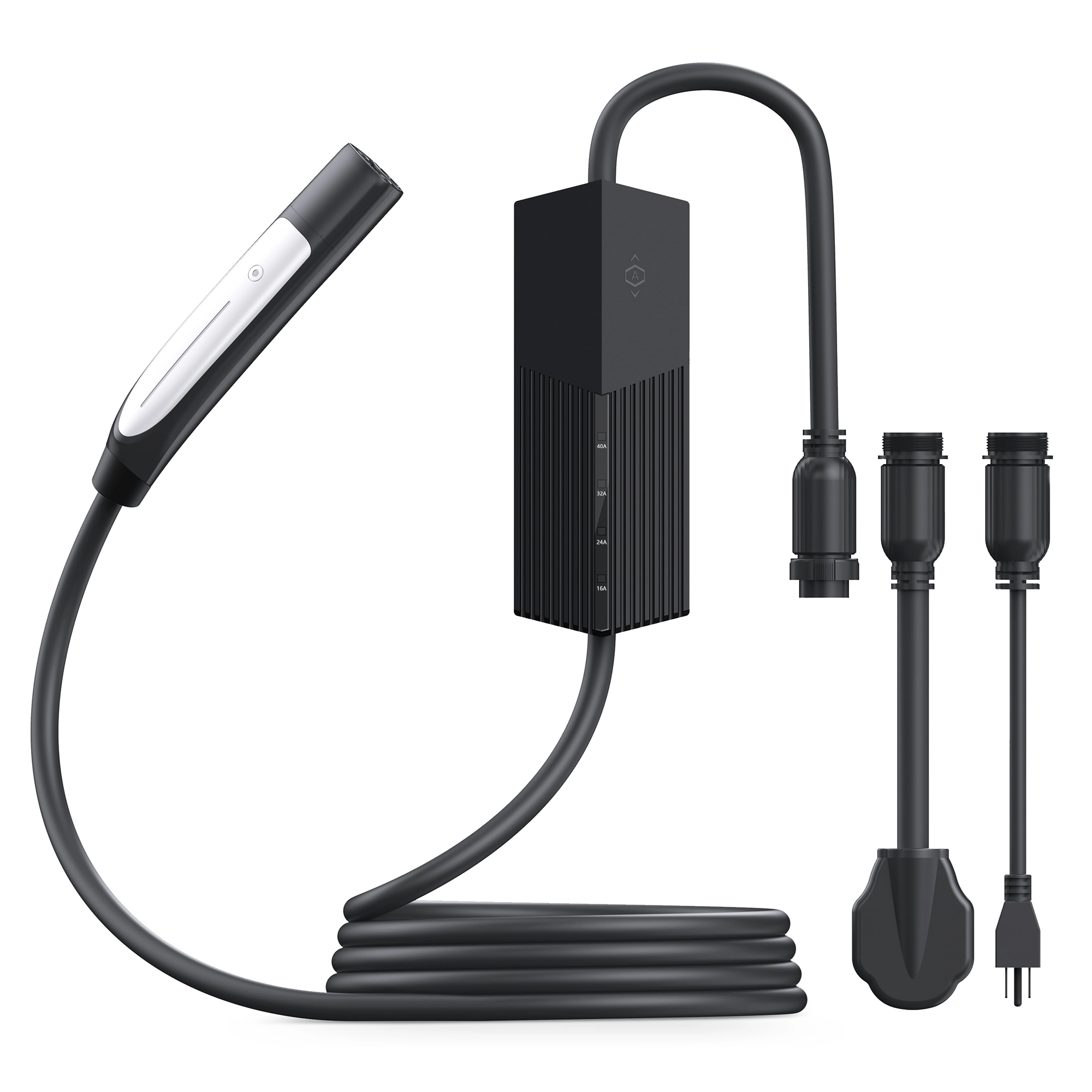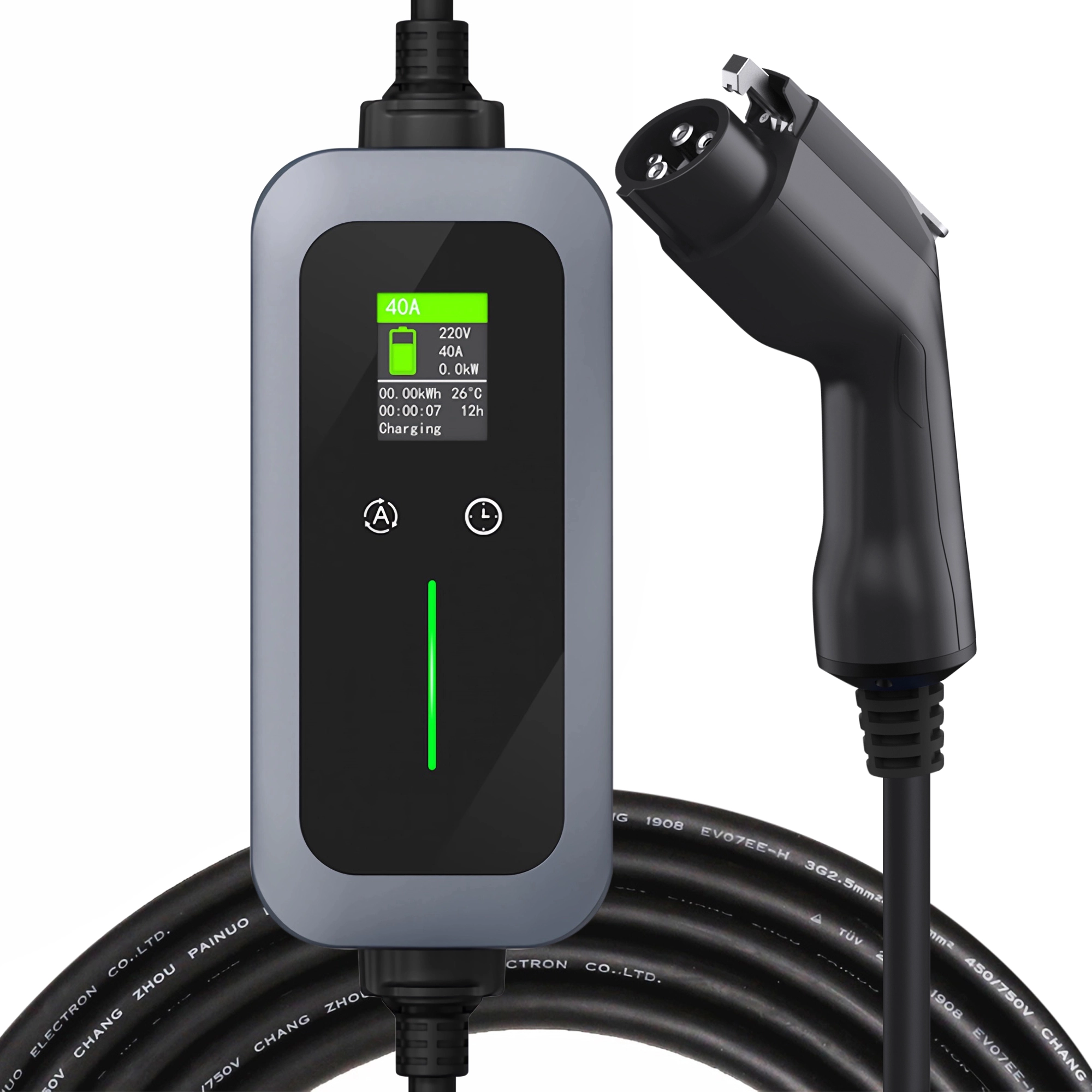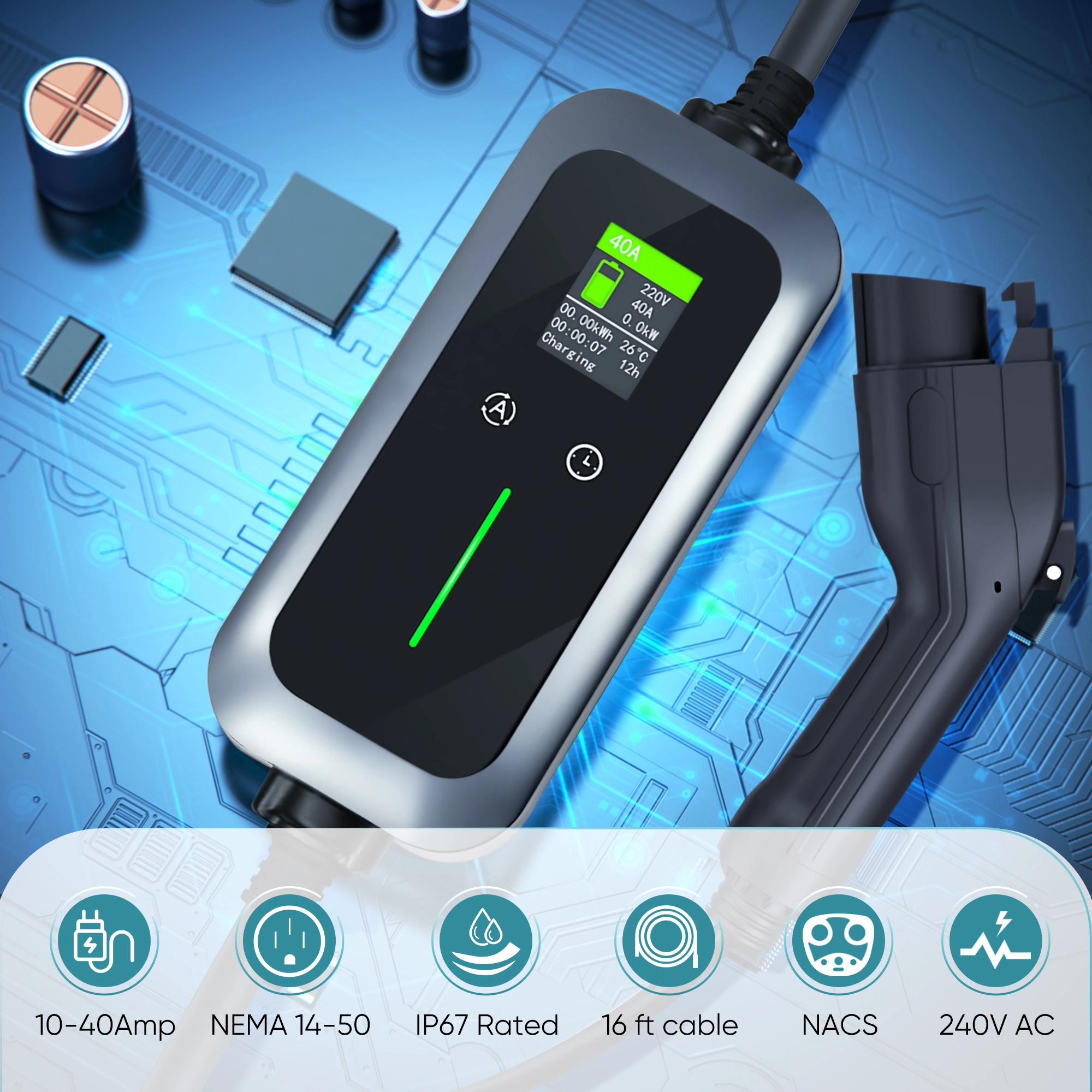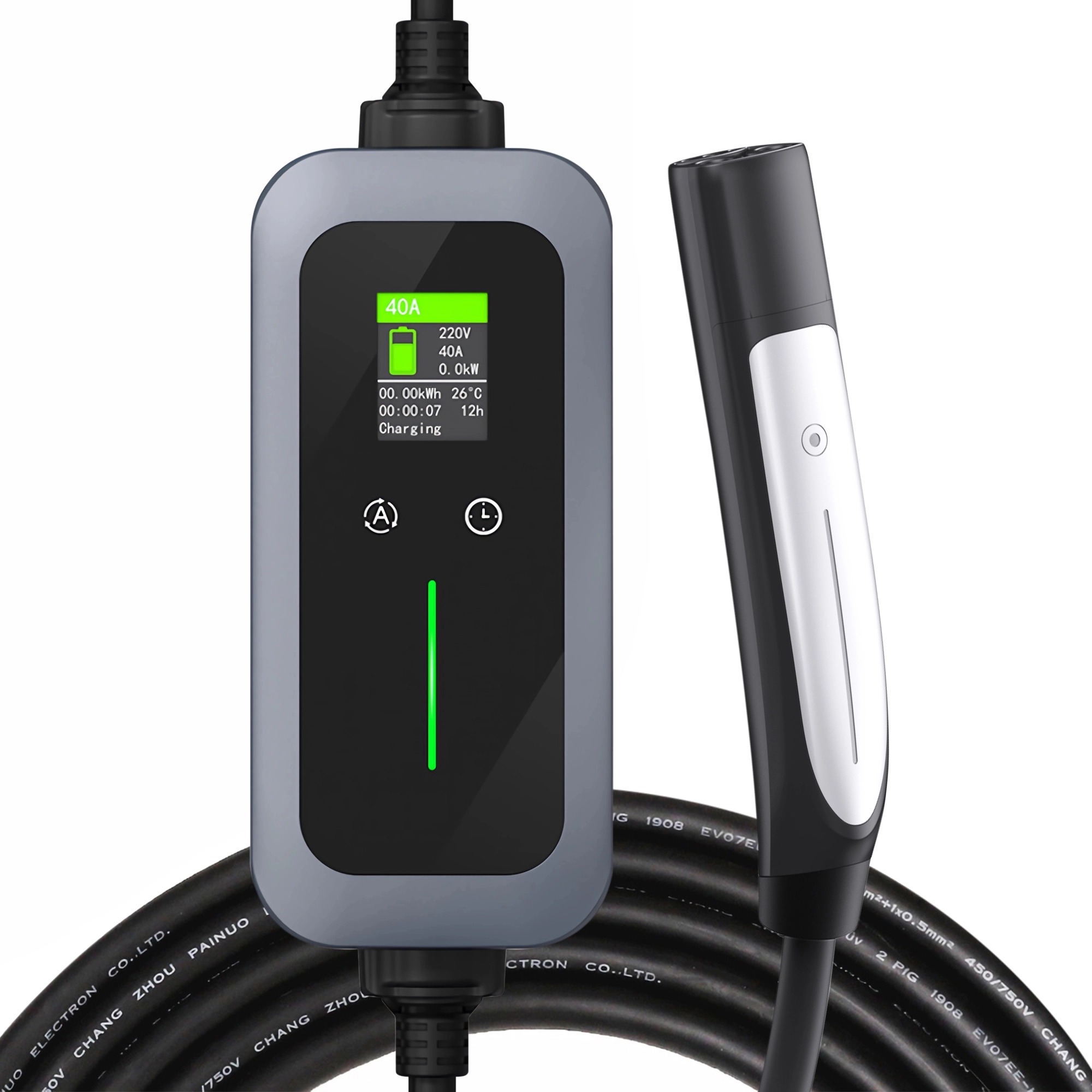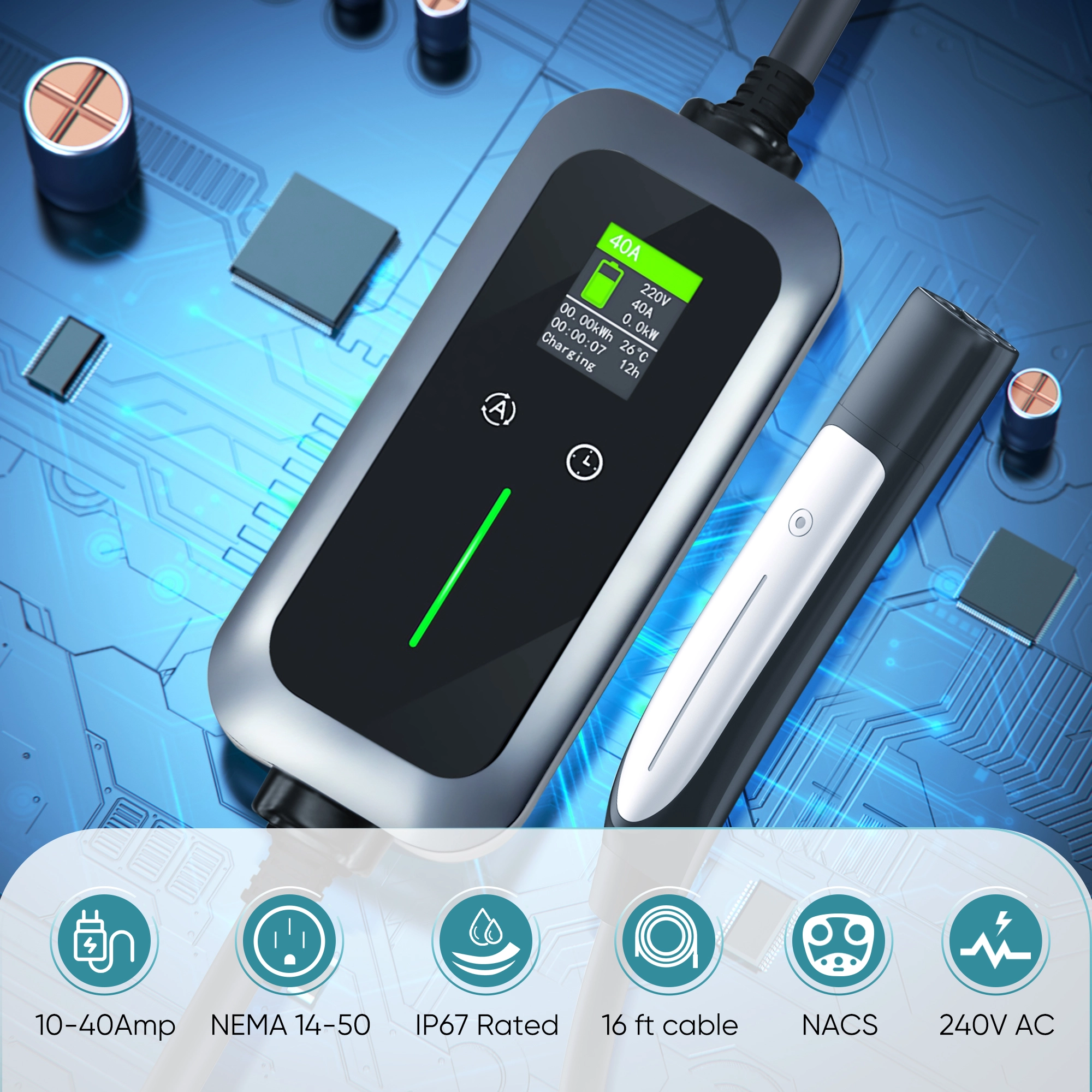Portable EV chargers are ideal for drivers who want flexibility to charge their vehicles at home, work, or on the road. Understanding the differences between Level 1 and Level 2 charging, plug types, connector standards, and amperage options can help you choose the best charger for your needs.
Level 1 and Level 2 Portable EV Chargers
- Level 1 chargers typically use a standard 120V household outlet (NEMA 5-15). They provide slower charging speeds, making them suitable for overnight charging or emergency use.
- Level 2 chargers require a 240V outlet (such as NEMA 14-50) and deliver significantly faster charging—ideal for daily use or travel where quick charging is needed.
Many portable ev chargers today support both Level 1 and Level 2 charging by offering interchangeable plug options, giving users more flexibility across different environments.
NEMA 5-15 vs. NEMA 14-50: Plug Type Matters
- NEMA 5-15 plugs are the standard three-prong household outlets. Charging is slower but more universally accessible.
- NEMA 14-50 plugs are commonly found in RV parks, garages, and some public charging stations, offering much faster charging through 240V power.
Some ev portable chargers come with both plugs, allowing users to switch depending on the available power source.
J1772 vs. NACS Connector: Know Your EV
- J1772 is the standard connector used by most electric vehicles in North America, including brands like Ford, Nissan, Chevrolet, and Hyundai.
- NACS (North American Charging Standard), also known as the Tesla connector, is now being adopted by Tesla and many newer EVs from brands like Ford, Rivian, GM, and more.
Before purchasing a charger, confirm which connector type your vehicle uses—or whether you’ll need an adapter for compatibility.
Amp Settings: Adjustable Charging Current (16A, 24A, 32A, 40A)
Adjustable amperage allows drivers to match their charger’s output with the vehicle’s input capacity and the circuit’s power availability. Common adjustable amp levels include:
- 16Amp – ideal for Level 1 charging or low-capacity circuits
- 24Amp / 32Amp – efficient mid-range options for daily use
- 40Amp – delivers the fastest portable charging speeds supported by most EVs
Having control over amp settings not only improves flexibility but can also enhance charging safety and reduce strain on home electrical systems.

